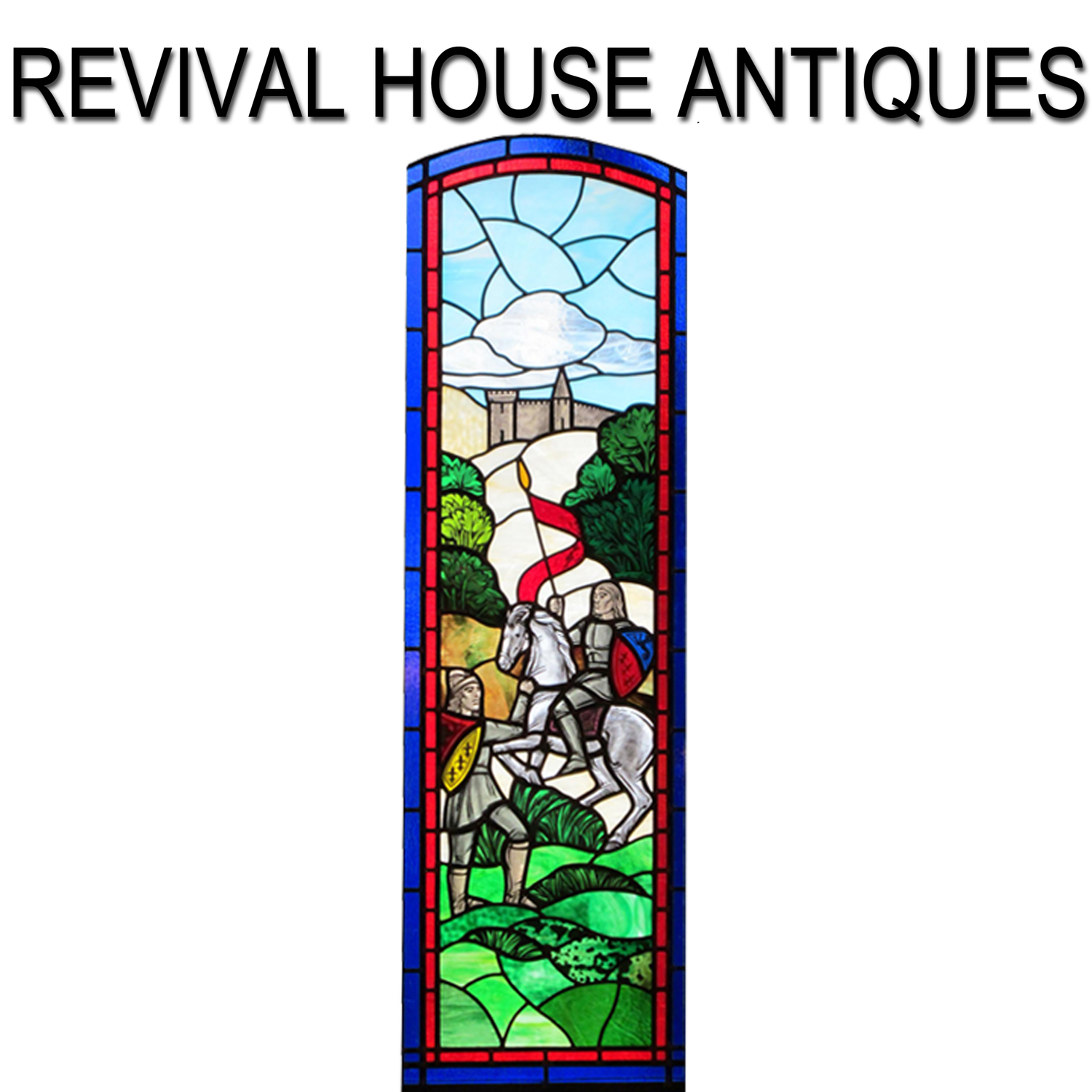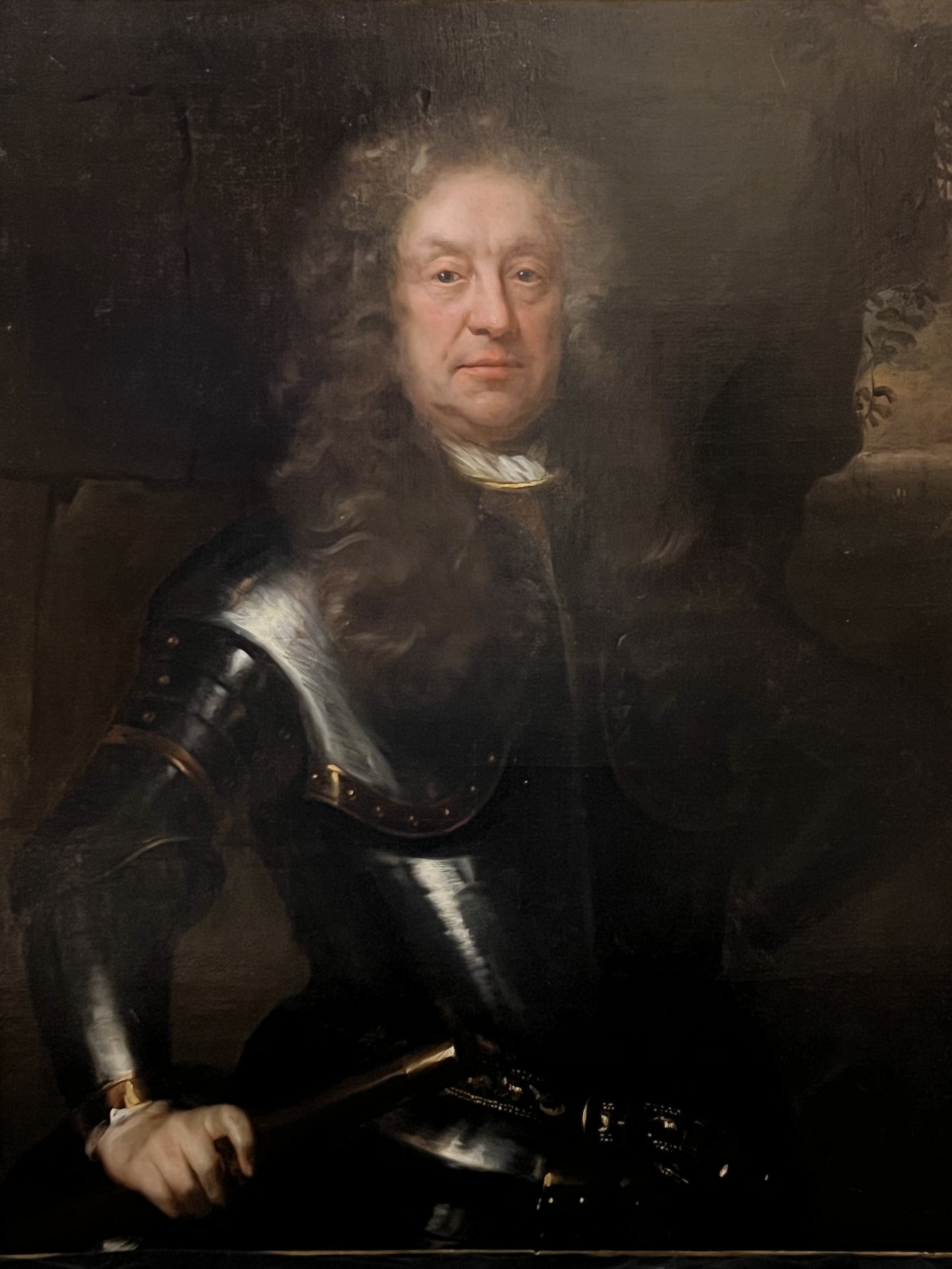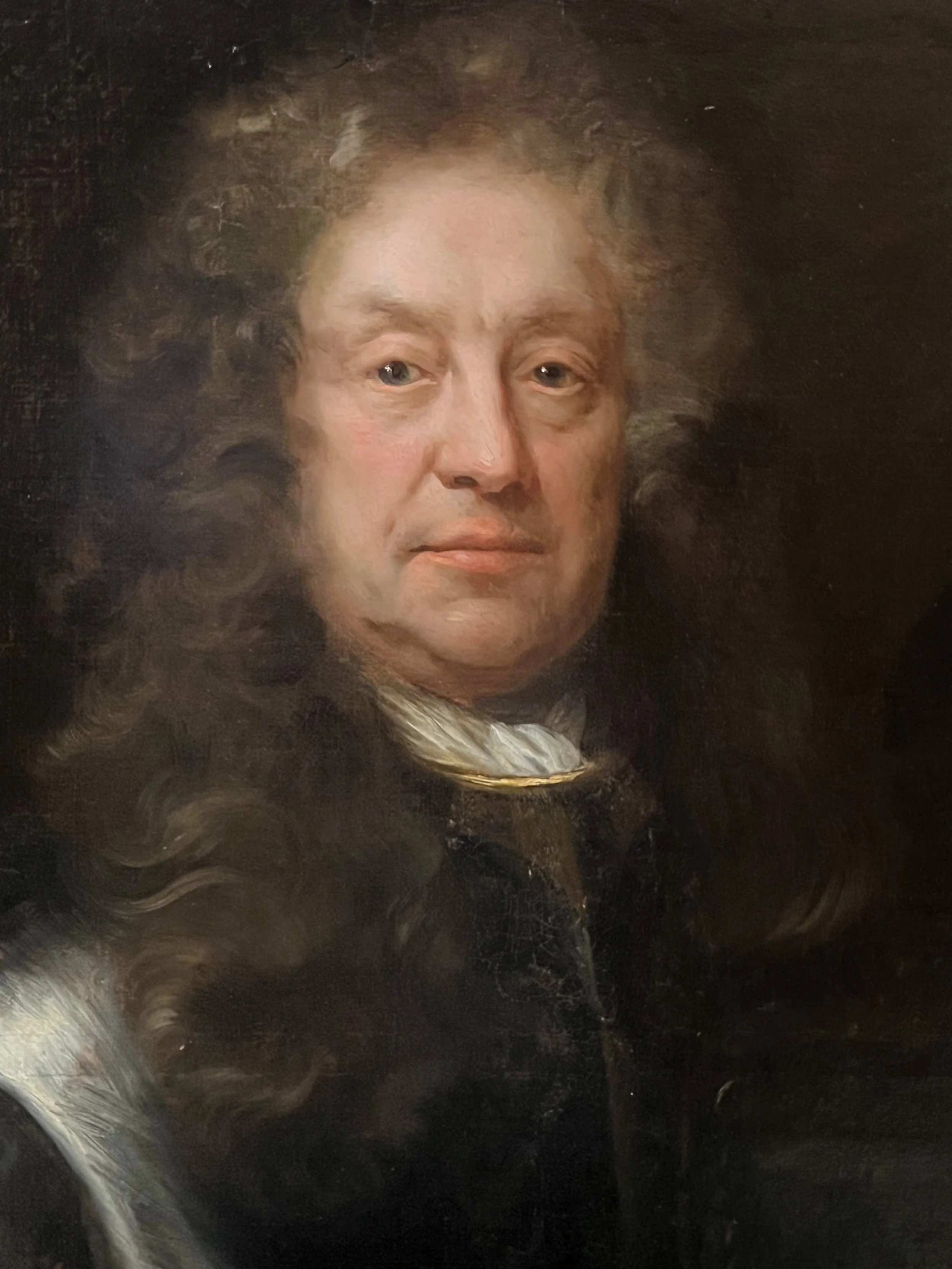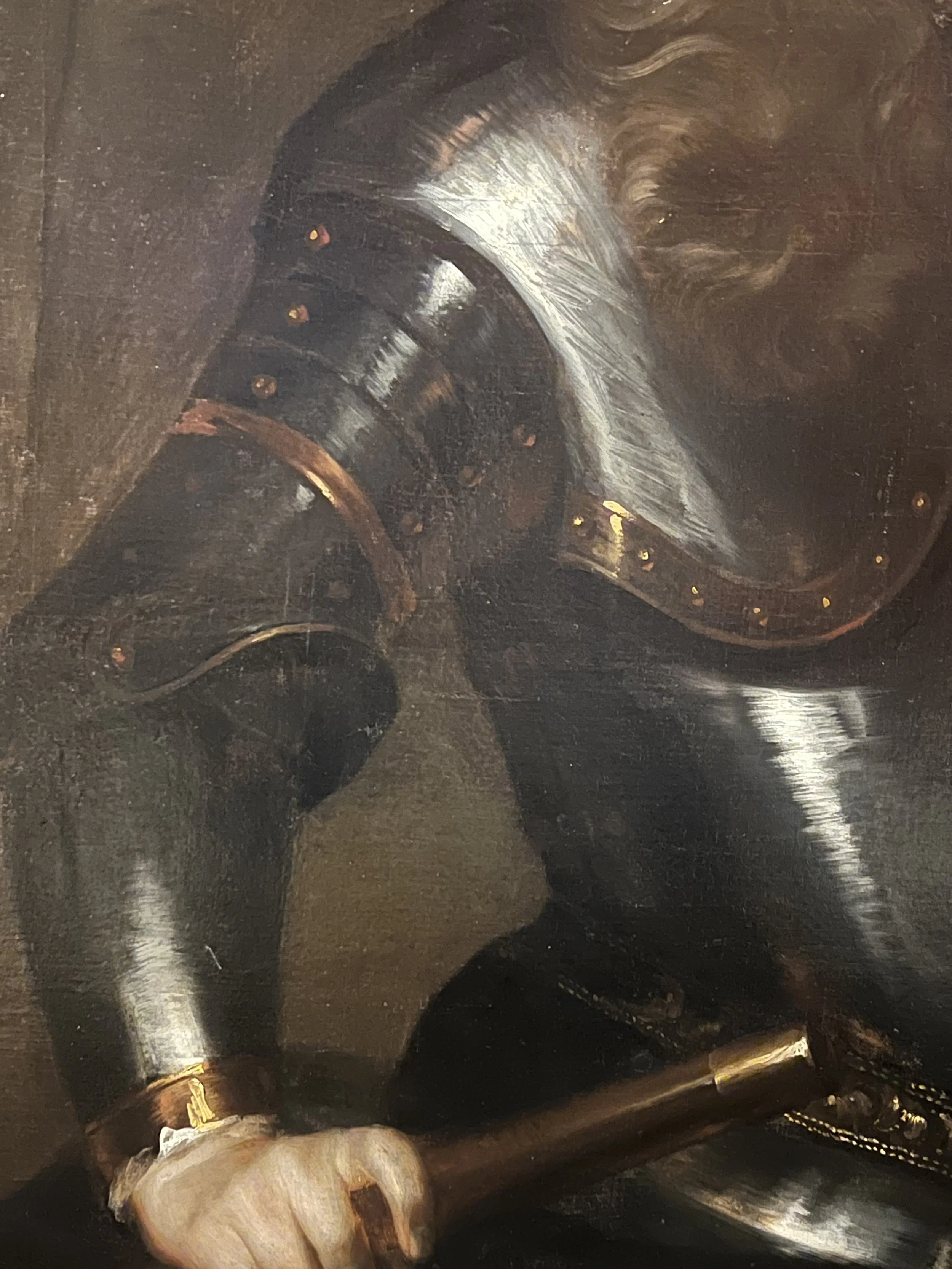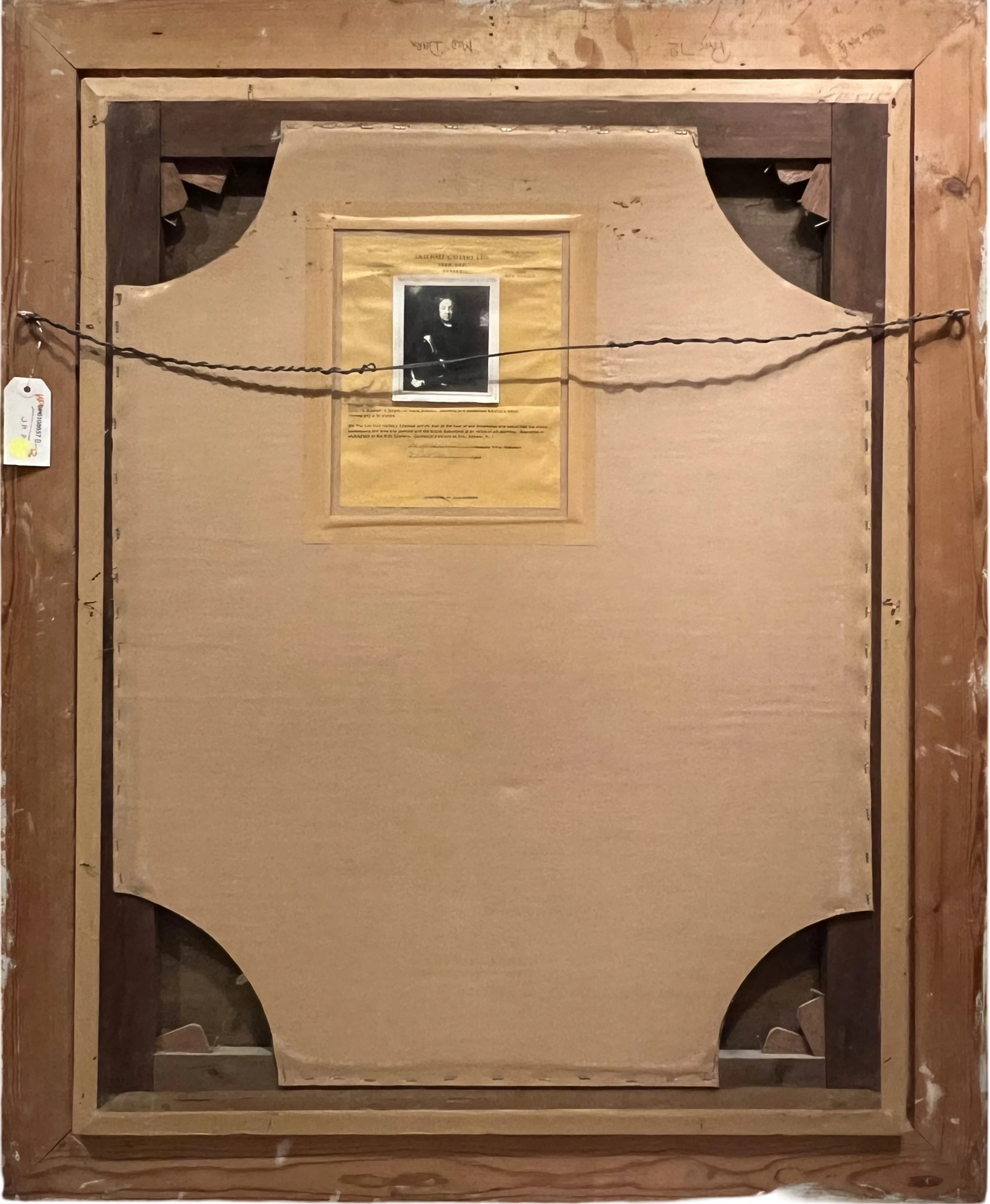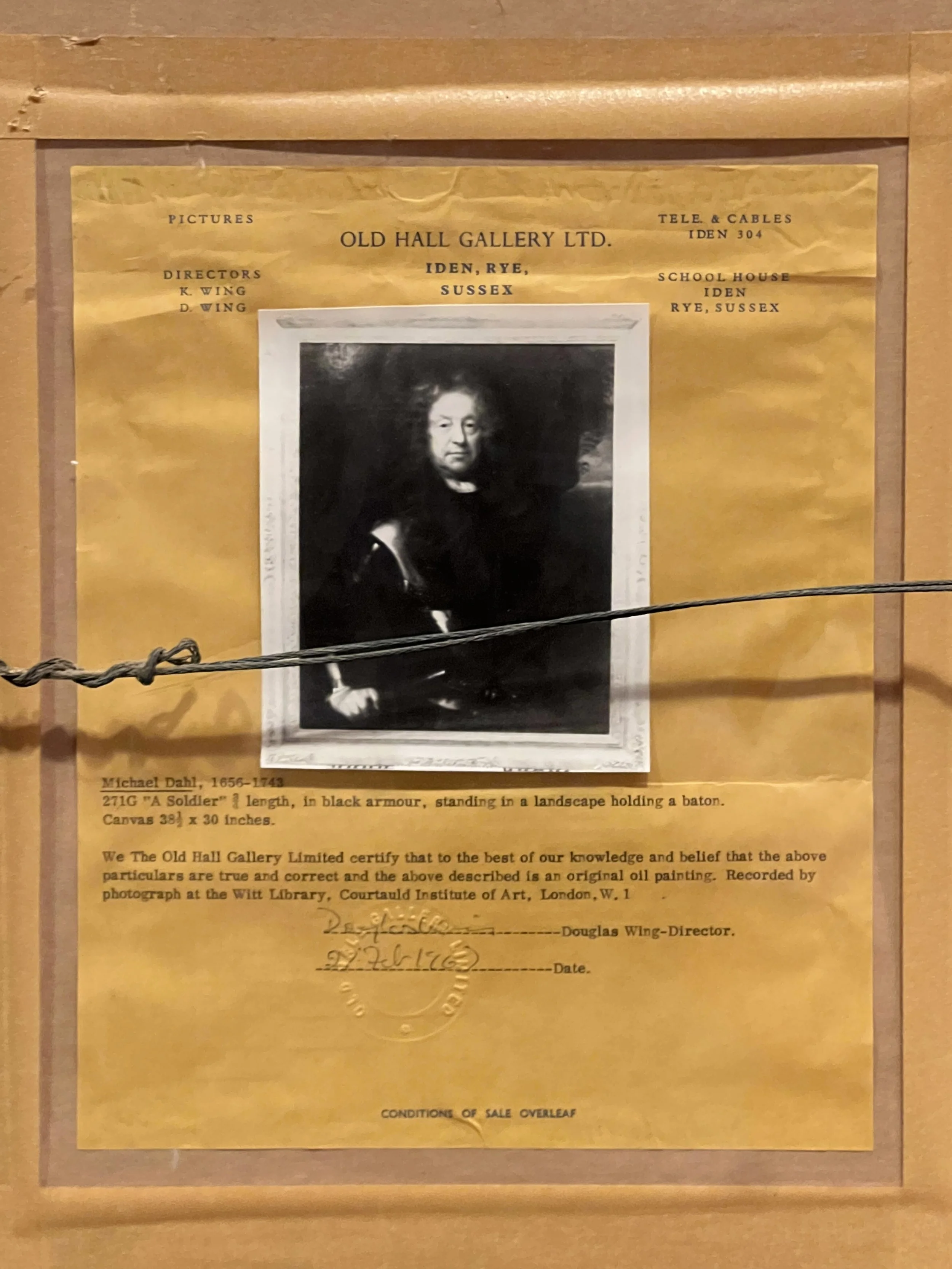Attributed to Michael Dahl, Oil on Canvas, Portrait of a Military Commander in Armor
Attributed to Michael Dahl, Oil on Canvas, Portrait of a Military Commander in Armor
An oil on canvas painting attributed to Swedish artist, Michael Dahl (1656/59-1743). The painting depicts the military commander within a landscape with one hand on his hip and the other holding a baton. He stands strong and proud wearing his armor. The painting includes a certificate of authenticity verso from Old Hall Gallery in England which states that records of the painting's documentation is held by the Witt Library at the Courtald Institute, London.
The painting measures 39" x 30 7/8" and overall with the gilt frame measures 45 1/4" x 37 1/8". The painting has been professionally cleaned by Baumgartner Fine Art Restoration, March 2025 and is ready to hang.
This item includes FREE Shipping in the United States, all other areas would incur additional shipping charges.
From AskArt about the artist: Michael Dahl was a Swedish portrait-painter who lived and died in England most of his career. He is considered one of the most internationally known Swedish painters of his time. He painted some members of royal families, such as Queen Anne of Great Britain, Prince George of Denmark and the exiled Christina, Queen of Sweden.
Michael Dahl was born in the capital of Sweden, Stockholm, in either 1656 or 1659, though most of the sources point to the year of 1659. His mother, Catarina Dahl, is assumed to have done many silent sacrifices to give Michael the opportunity of getting a good education, so that his talent was not to be wasted. According to letters written by Michael from Rome to his mother back in Sweden, she had raised him and his sister in an old-fashioned way and in the spirit of Christianity.
At the age of at least 15 years, Dahl had to decide where he was going to study art, though it wasn't much of a choice. The only options in Sweden at the time were becoming an apprentice in the Painters' Guild or joining the Martin Hannibal and David Klocker Ehrenstrahl group.
Michael Dahl received his first lessons in art in 1674 from the Hungarian-born drawing-master Martin Hannibal, who had been requested to come to Sweden from Italy by the prominent Swedish painter David Klöcker Ehrenstrahl to aid him in the foundation of a portrait academy and teach students and amateurs in the first elements of painting. After his time with Hannibal as the teacher of the basics, Dahl was one of the students who were allowed to continue at a more sophisticated level with Ehrenstrahl as the teacher.
On 30 July 1682, Dahl was issued a passport to be able to travel throughout Europe for the sake of his studies. He first went to London where he came in contact with the skilled engraver and painter Robert White. The earliest trace of Dahl's activity in England is a portrait of Samuel Clarke, which he copied from White's engraving the same year as it was made.
White took Dahl under his wing and showed him the ropes in the world of painting in London. As a token of gratitude, Dahl aided White with valuable ideas when it came to making an engraving of the contemporary King of Sweden, Charles XI. This was possible due to all the Royal paintings Dahl had observed back in the studio of Ehrenstrahl. White in turn, helped Dahl expand his network in London, and he soon came in contact with the man who is probably responsible for the greatest impact on Dahl's development - Godfrey Kneller.
Kneller showed Dahl what the public really wanted from them, the artists, and how they were going to get paid for their work. His studio was more to be described as a factory than a studio. In this "factory" of Kneller's, Dahl both studied and made a living. A man who did the same was Henry Tilson with whom Dahl became close allies, studying and working together in Kneller's studio. They also traveled together to Paris, Venice and Rome.
Michael Dahl left the city of London for Paris, but he was to return to London later in his life. Because of too little documentation it is impossible to determine when they left Paris, but it is known that they were still working in Paris in April 1685. Paris at that time was a common refuge for Swedish travelers. Later the same year they went to Italy. It is unknown how long they stayed there but it can't have been long due to their arrival in Rome the same year. At that time, the Swedish Queen Christina was living in Rome. She had abdicated from the throne of Sweden and converted over to the Roman Catholic Church. Even though she was not queen anymore, she still had a strong bond to Sweden and its people and was helpful when it came to assisting Swedish artists in the city. Therefore one of the first things Dahl did upon his arrival in Rome was to get an audience with Christina, which became a link to the higher powers in the city including the Pope. However, to get the assistance Dahl needed from her, he had to convert to the Roman Catholic Church as she had done. After some persuasion he eventually did, but some of the promises which were undoubtedly made to him did not occur. However, on several occasions, Christina let Dahl paint her portrait, and she arranged for Dahl to show a specimen of his work to Pope Innocent XI. The Pope enjoyed it, and Dahl was awarded a gold medal.
Dahl had now been traveling for over five years and his purse was getting thin. In November, 1689, he and Tilson, aided by Christina, obtained passports and returned to London. Dahl adapted to his new life, and after three years in London, he had transformed into a young London "dandy", who paid his attentions to a certain Mlle. Fanchou, though she was not the woman he was to marry. In 1696, he was able to settle in the neighborhood of the Swedish Legation in the fashionable quarter of Leicester Field (now Leicester Square). Dahl kept on advancing, and in 1696 he painted the portrait of the Duke of Somerset who found him to his liking even though the Duke was known for being a very despotic and difficult man to handle. The Duke continued to hire Dahl, who for the next twenty years immortalized members of the Duke's family. In 1705 he got the chance of painting several canvases of Prince George of Denmark, and it was likely through Prince George that Dahl came into the circles around Queen Anne, whose portrait he also painted.
In 1705, Dahl married a young English girl whose name is unknown. They had a son, Michael, and two daughters, Dorothy and Catherine. The family was very respected by art-interested people in the neighborhood and lived a pleasant life there until 1725, when they moved to Beak street, which today is in the south end of Carnaby Street.
When Sir Godfrey Kneller died in 1723, George I needed to find a new court painter and he was looking in Dahl's direction. This opportunity, however, passed when Dahl refused to paint the portrait of the Duke of Cumberland because he was only two years old. Dahl had taken the request as a belittlement of his talent according to what Lord Egmont wrote in his diary about the incident: "He refused to draw the Duke of Cumberland, when two years old, desiring the lord who went down to tell His Majesty that not having had the honour of painting him or his royal consort he was unwilling to begin with a child." King George became furious by this reply, and Dahl's opportunities of becoming a Sir were ruined.
Michael Dahl died in London on 20 October 1743 and was buried a week later in St James's Church, Piccadilly.
